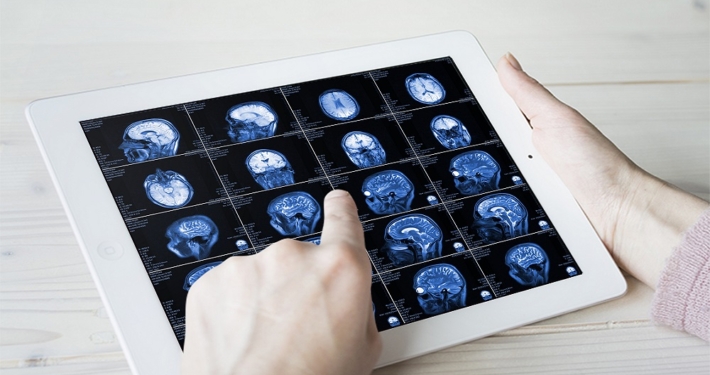Women with migraine may experience migraine attacks more frequently in the first 3 months of their pregnancy due to hormonal changes that occur during the normal course of pregnancy. They experience fewer headaches in the second and third trimesters. This is because after the first 3 months, migraine attacks decrease due to reasons such as estrogen levels becoming stable, increasing endorphin levels, blood glucose metabolism becoming more regular, and muscle relaxation. All headaches experienced during pregnancy and breastfeeding should be taken seriously and should definitely be evaluated by a neurologist. Not all of these pains may be migraines and may be caused by an important underlying condition.
Especially the first headache or migraine attack experienced during pregnancy is a very important and important type of pain that should be paid attention to. The changing metabolism with pregnancy, changes in vascular circulation and hormonal status can trigger a number of serious diseases that can cause headaches. Unresponsiveness to treatment in migraine headaches during pregnancy requires investigating secondary causes. Of these, it is necessary to consider conditions such as preeclampsia and eclampsia, as well as diseases that can lead to thrombosis in the cerebral veins and threaten the life of the mother and the baby. In 10% of cases, the first migraine attack occurs during pregnancy.
Migraine attacks, which generally decrease in the last 6 months of pregnancy, may return with increasing frequency after birth due to reasons such as a sudden decrease in estrogen levels, changes in sleep patterns, and deterioration in quality of life. In addition, the initiation of breastfeeding during this period may reduce the number of treatment options.
For this reason, in the treatment of migraine attacks that occur immediately after pregnancy, it is necessary to take measures that increase quality of life first and to be careful about sleep, nutrition, and migraine triggers. The possibility of simple painkillers and migraine-specific painkillers to be taken during headache attacks passing into the milk should be considered. For these reasons, milk should be expressed according to the time the drugs pass into the milk. In addition, the possibility of the classically used preventive treatments passing into the milk should not be forgotten.
How is migraine pain treated during pregnancy?
Pregnancy plans should definitely be discussed with patients and the treatment they are receiving should be planned to be discontinued accordingly. If there is a pregnancy plan, the drugs that are dangerous to use during pregnancy should be reduced and discontinued according to a certain plan, and the treatment should be continued with the safest methods with strategies to be determined according to the patient’s condition. Attention should be paid to the risk groups of the drugs used here. In addition, sleep disorders, eating habits and other triggers that may increase migraine attacks should be determined. Since many drugs used in migraine treatment are not safe to use during pregnancy, the most rational approach is for migraine patients who are planning a pregnancy to consult a neurologist before getting pregnant. Options for the treatment of migraine pain during pregnancy are limited. The best option is to carry out the treatment process together with your physician. Again, staying away from possible triggers, relaxation exercises, some biofeedback methods, meditation, yoga and maintaining regular healthy living habits form the basis of the pain management. However, despite these, some treatments can be recommended for pregnant women with migraine who have pain. These are;
Magnesium
The FDA’s safety category for pregnancy is level D. In other words, its safety should be decided by considering the benefit it will provide to the patient.
Ondansetron
It is frequently used to prevent nausea and vomiting during pregnancy. It is pregnancy category B and care should be taken when using it.
Metclopramide
It is used to treat nausea and vomiting during pregnancy. It is pregnancy category B. Central nervous system side effects should be taken into consideration.
Butalbital
This barbiturate derivative used in the treatment of headaches together with acetaminophen, aspirin, caffeine and codeine is prescribed quite frequently.
Paracetamol
It is a pregnancy category B drug used by most patients with pregnancy migraine. There is data that it may be associated with attention deficit hyperactivity in children.
Peripheral nerve blockade
It is a very reliable treatment method used for pregnancy migraine. It can usually be used comfortably after the 15th week of pregnancy and is quite effective.
 https://drturanpoyraz.com/en/wp-content/uploads/2023/07/migrentedavisi.jpg
667
1000
drturan_pyrzawp
https://localveri.net/drturanpoyraz/wp-content/uploads/2024/07/logo2.png
drturan_pyrzawp2023-07-19 11:52:042024-08-01 16:31:26MAIN GOALS IN MIGRAINE TREATMENT
https://drturanpoyraz.com/en/wp-content/uploads/2023/07/migrentedavisi.jpg
667
1000
drturan_pyrzawp
https://localveri.net/drturanpoyraz/wp-content/uploads/2024/07/logo2.png
drturan_pyrzawp2023-07-19 11:52:042024-08-01 16:31:26MAIN GOALS IN MIGRAINE TREATMENT


